We enjoy various types of mochi rice cakes in Japan, especially for Japanese New Year. In this recipe, you can learn how to prepare mochi at home in three flavors—kinako (roasted soybean flour), isobeyaki (soy sauce with nori), and anko (sweet red bean paste).
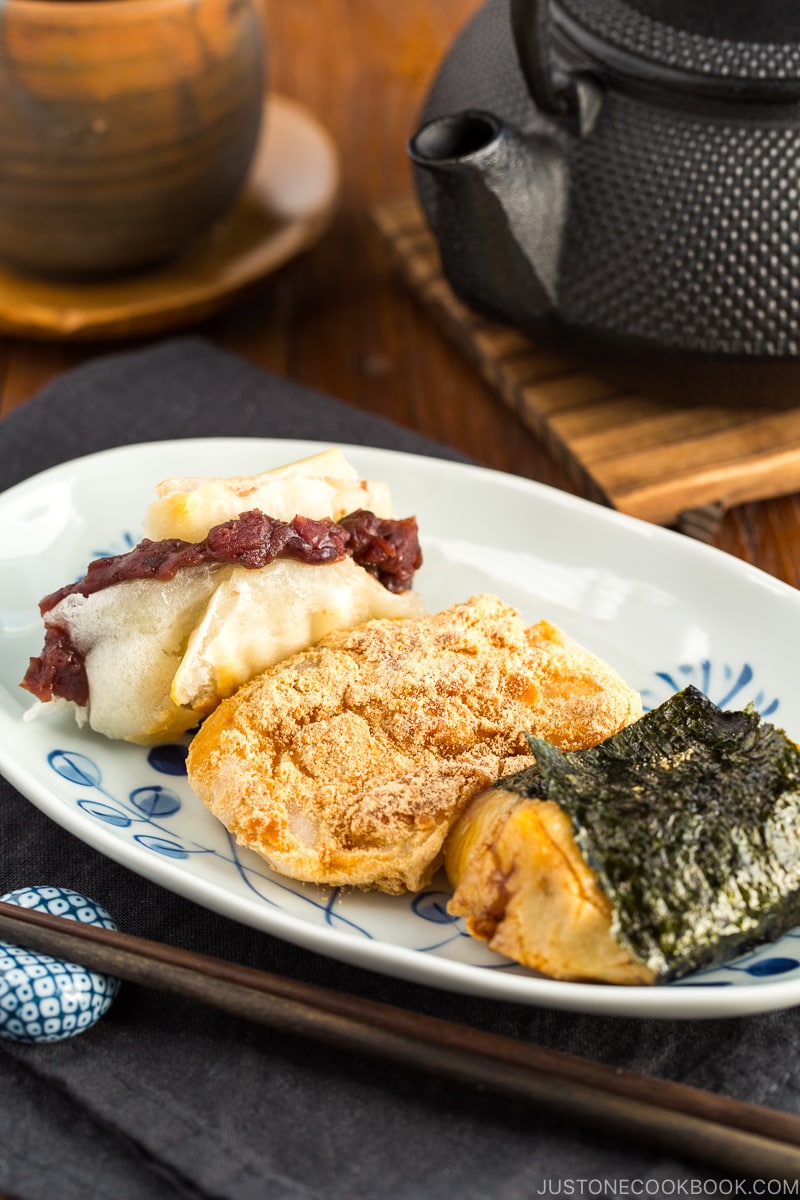
After I shared my recipe for the Japanese New Year mochi soup called Ozoni, I received a lot of feedback from my readers regarding the “mochi” I added to the soup. They were surprised that I added mochi in the savory soup and asked me if it was sweet. The feedback made me realize that the Japanese and non-Japanese see the word “mochi” quite differently.
When you hear the word “mochi,” what’s the first thing that comes to your mind? Many of you think of the round mochi that is stuffed with some kind of sweet filling such as red bean paste or chocolate, strawberry, mango, etc for more modern flavors.
However, in Japan, we usually call that type of sweet mochi daifuku. So what is mochi then?
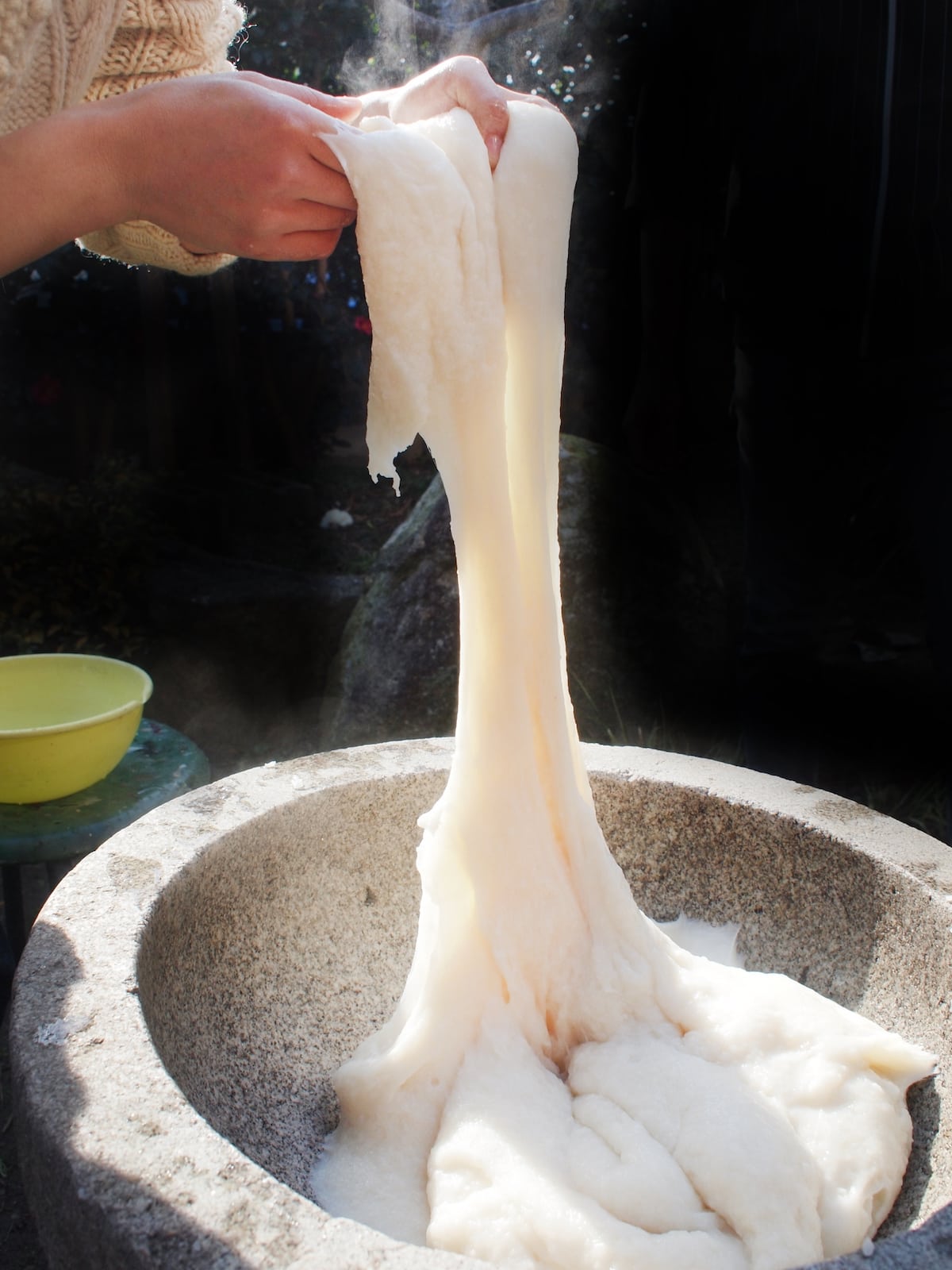
What Is Mochi?
When we say mochi in Japan, it usually implies plain mochi – either freshly made or cut packaged mochi available at supermarkets.
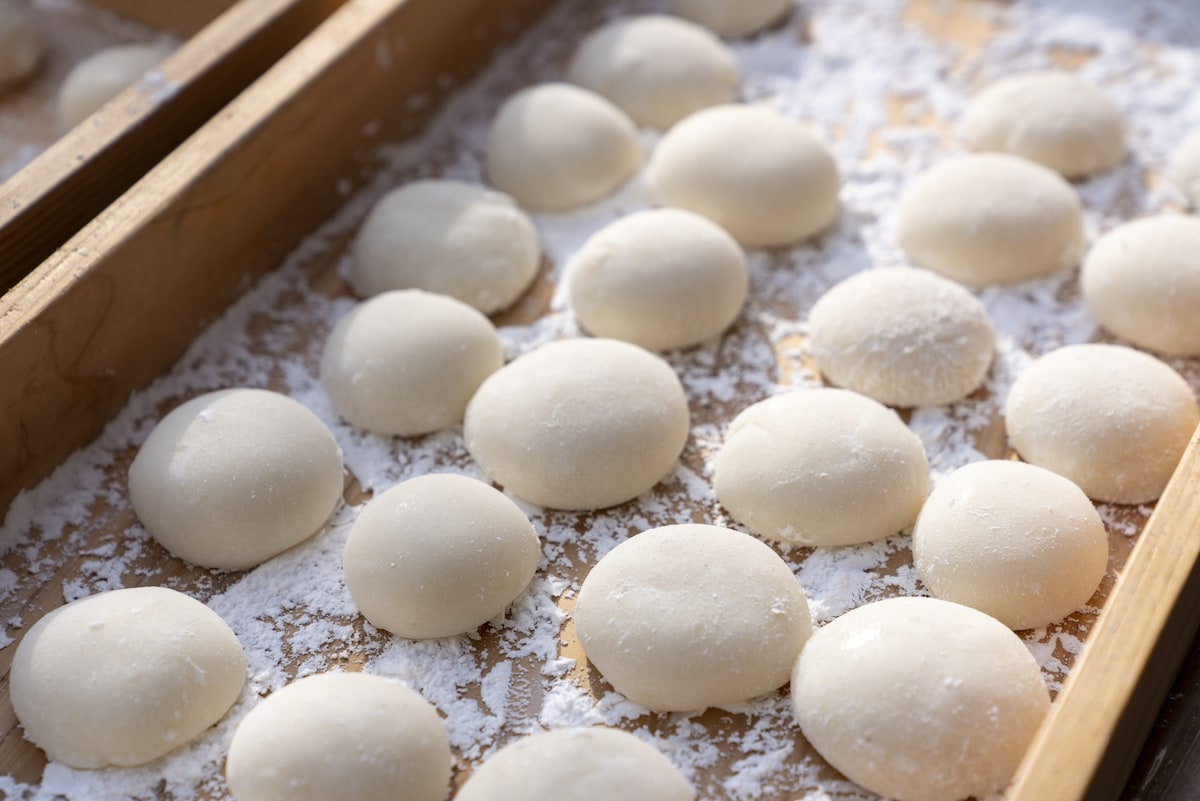
Mochi is a Japanese rice cake made of mochigome (糯米), a short-grain japonica glutinous rice. The rice is pounded into a paste (left pic) and molded into the desired shapes such as round shape mochi, maru mochi.
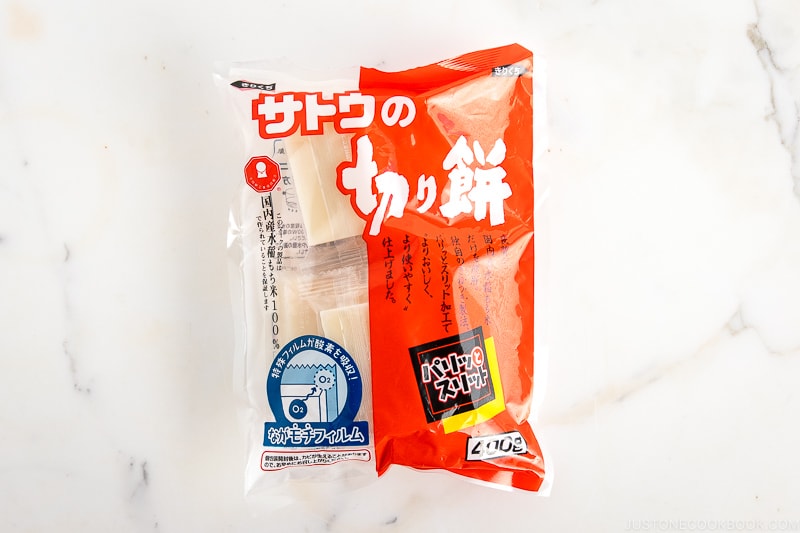
When we eat mochi at home, we buy kiri mochi that is individually packaged in plastic bags.
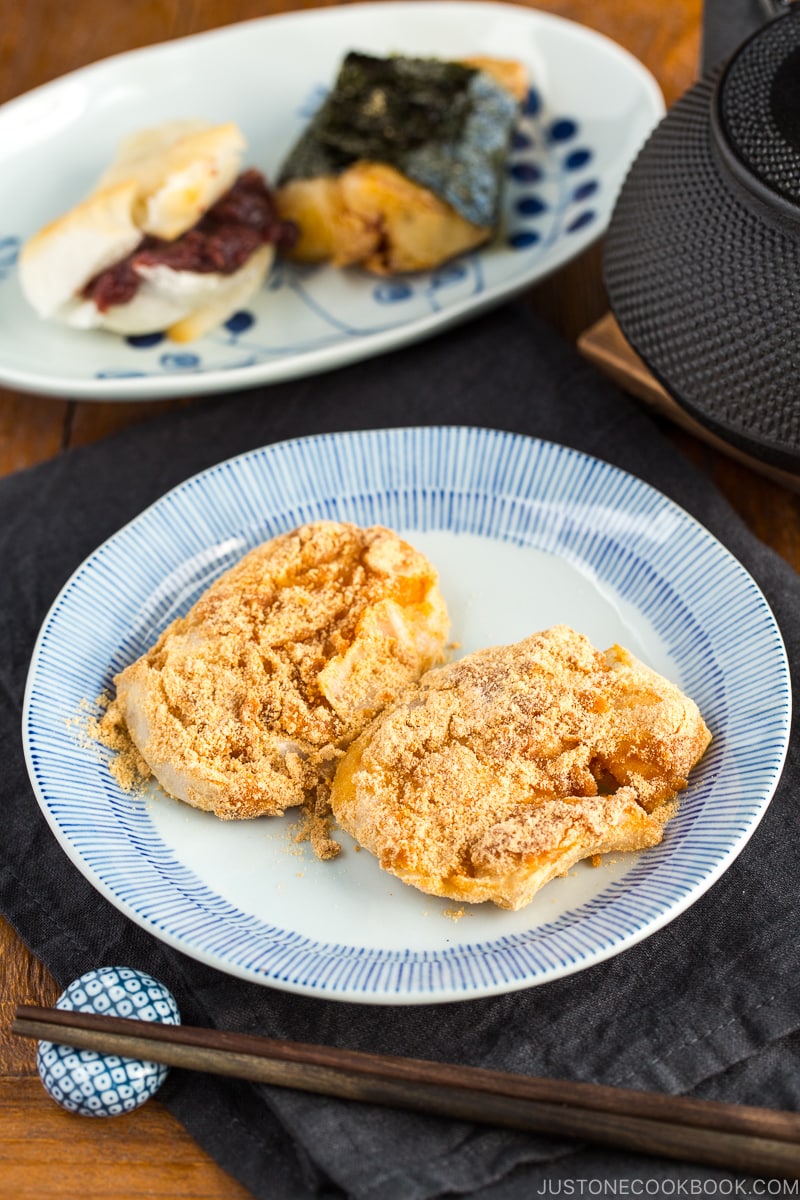
How To Enjoy Mochi At Home?
The freshly made Japanese mochi can be included as part of savory or sweet dishes. For savory dishes, mochi is added to a soup like Ozoni, hot udon noodle soup such as Chikara Udon, and Okonomiyaki.
For sweets, we use Japanese mochi to make Mochi Ice Cream, Zenzai (Oshiruko), Strawberry Daifuku, and more.
Making mochi from glutinous rice takes a long time and effort, therefore most families don’t make mochi from scratch anymore. If we want to enjoy freshly pound mochi, we can do so by attending a mochi pounding event or some folks buy a small Japanese mochi pounding machine at home for this task (some of the Japanese bread makers have an option for mochi pounding!).
These days to enjoy mochi all year round and during the Japanese New Year, we can buy this pre-cut mochi (kiri mochi, 切り餅) from supermarkets.

Today I’ll show you the 3 most popular recipes to enjoy mochi using the kiri mochi. Each family cooks the mochi differently based on their preference. My family (in Japan) loves crispy toasted mochi rather than boiled mochi, so we always toast the mochi first before flavoring it. Read the note section of the recipe for the microwaving and boiling method.
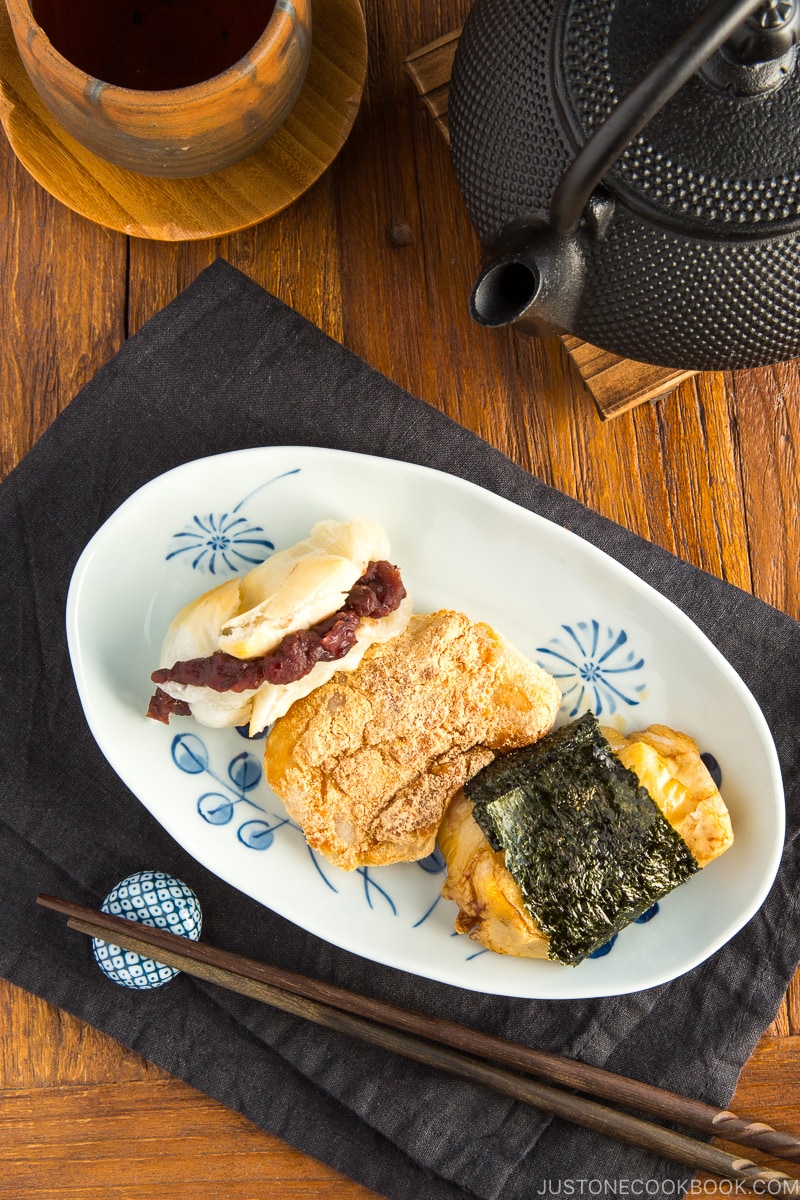
Types of Japanese Mochi
Here are the three flavors we make today: Anko Mochi, Kinako Mochi, and Isobeyaki.
- Anko Mochi (餡子餅) is a mochi where we place red bean paste inside the mochi.
- Kinako Mochi (きな粉餅) is mochi coated with a mixture of kinako (roasted soybean flour) and sugar.
- Isobeyaki (磯辺焼き) is mochi coated with a mixture of soy sauce and sugar and wrapped with nori seaweed. Most people prefer Isobeyaki without sugar, but my family always makes it with sugar. I assume this is not based on regional differences, but it depends on the family’s preference.
What’s your favorite? When I was growing up, I couldn’t pick my favorite… So for the Japanese New Year’s Day, I used to eat six pieces of mochi – two in ozoni, two anko, one kinako, and one isobeyaki. I wish I was young again so I could eat six pieces of mochi in one sitting without worrying about increasing my waist size!
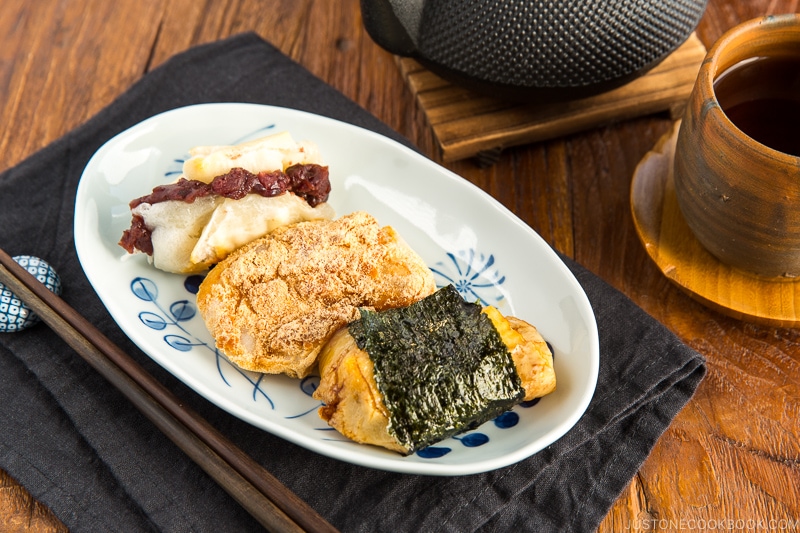
Wish to learn more about Japanese cooking? Sign up for our free newsletter to receive cooking tips & recipe updates! And stay in touch with me on Facebook, Pinterest, YouTube, and Instagram.
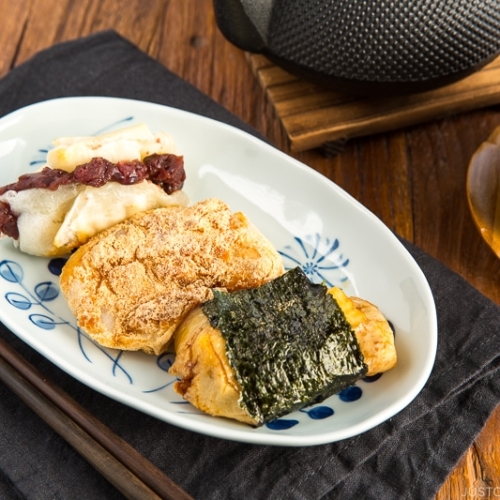
How To Enjoy Japanese Mochi
Video
Ingredients
- 3 pieces Japanese rice cake (mochi) (plain Japanese rice cakes; you can also use warm, fresh Homemade Mochi and skip toasting)
For the Kinako Mochi (Roasted Soybean Flour)
- 2 Tbsp kinako (roasted soybean flour)
- 1 Tbsp sugar
- 1 cup hot water
For the Isobeyaki (Soy Sauce)
- 2 Tbsp soy sauce
- 1 Tbsp sugar (optional; some people eat isobeyaki without sugar, but my family always makes it with sugar)
- 2 sheets nori (dried laver seaweed) (I use seasoned nori called ajitsuke nori)
For the Anko Mochi (Sweet Red Bean Paste)
- 1 Tbsp sweet red bean paste (anko) (use store bought or make homemade Anko and Pressure Cooker Anko)
Instructions
- Gather all the ingredients.

- Place 3 pieces Japanese rice cake (mochi) in a toaster oven and toast until puffed up and slightly golden brown, about 10 minutes. You can also pan-fry, boil it in the water, or microwave. For microwaving, put a mochi in a bowl, add water to cover it, and microwave. If you use warm, fresh Homemade Mochi, skip the toasting step and move on to the flavoring step.

- Once the mochi pieces are puffed up, gently smash them with your hand. From here, dress your mochi with roasted soybean flour, soy sauce, and sweet red bean paste.

To Make the Kinako Mochi (Roasted Soybean Flour)
- Mix together 2 Tbsp kinako (roasted soybean flour) and 1 Tbsp sugar in a bowl. Prepare a small bowl with 1 cup hot water.

- Dip the smashed mochi in the hot water, then dredge in the kinako mixture.

To Make the Isobeyaki (Soy Sauce with Nori)
- Mix together 2 Tbsp soy sauce and 1 Tbsp sugar in a bowl. Microwave for 20 seconds to dissolve the sugar.

- Briefly soak the smashed mochi completely in the soy sauce and sugar mixture. Then, wrap with 2 sheets of seasoned ajitsuke nori (dried laver seaweed).

To Make the Anko Mochi (Sweet Red Bean Paste)
- Pull the smashed mochi from both sides and wrap it around a 1 Tbsp scoop of anko (sweet red bean paste). It’s sticky, so be careful when handling.

To Serve
- Serve the mochi immediately while warm.
Nutrition
Editor’s Note: This post was originally published on January 19, 2015. The post has been published in December 2021.
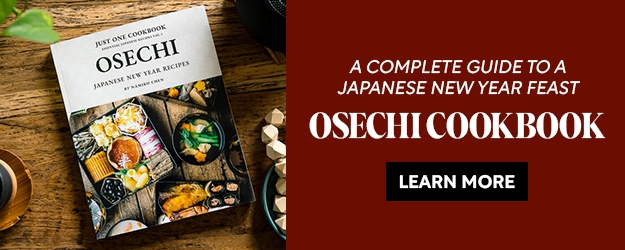
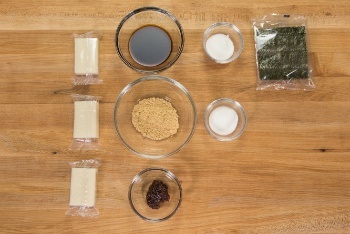




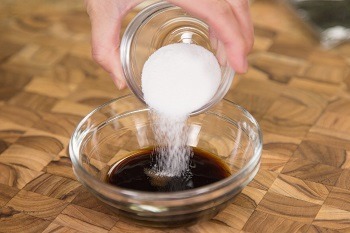












Hi! Thank you for the guide!
Can I use raw mochi dough (made from glutinous rice flour, sugar, salt, water) and pan fry it? Or do I have to steam the dough first before frying it? Thank you!
Hi Beet, Thank you for reading Nami’s post and trying her recipe.
If the dough is raw, you can boil it before pan-frying it. https://www.justonecookbook.com/mitarashi-dango/
We hope this helps! 🙂
I made mochi for the first time using your recipe. My spouse said it was as good as he remembers his obachan’s. His family uses sweetened soy sauce for dipping like yours.
Hi Vickie! Aww. We are so happy to hear you and your family enjoyed Nami’s recipe!
Thank you for trying this recipe and for your kind feedback. 🥰